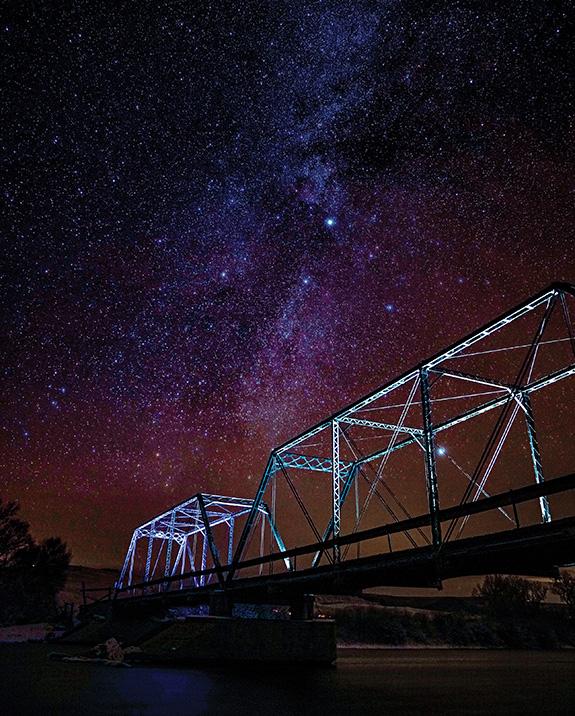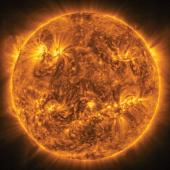Celestial Celebs
The season’s astronomical bucket list.
Spring in Montana: when snow turns to mud and we bet on whether the tender new shoots and flower buds will survive the errant late frosts—and if the snowmelt will overflow the riverbanks. Spring has a sketchy reputation in these parts, but the sky, at least, provides a background of schedulable events. Put these on your spring astronomical bucket list and enjoy.
The spring equinox arrives right on time on March 20—at precisely 10:15am. Earth reaches one of the points in its orbit where it’s tilted neither toward nor away from the sun; the sun rises and sets due east and west, and the hours of daylight and darkness are briefly in balance.
A bit of cultural apocrypha suggests that one can magically balance eggs on their ends on this day as well, and people try with varying degrees of success. Egg balancing actually depends on the roughness of the balancing surface and the irregularities of the eggshell, completely independent of the day of the year. But if the equinox finds you with time on your hands, climb the nearest hill to watch the sunrise, try your hand with a couple of eggs, and when you’re done playing, fry them up with potatoes and bacon over a campfire for a nice brunch.
March also offers us the second Blue Moon for the year on the 31st. Neither one is blue, but both are the second full moons falling in their respective months—and that’s what they call them. They’re normally rare, but not this year. You might as well take advantage of all the lovely moonlight—perhaps with a snowshoe hike up on a mountain ridge where the snow hasn’t melted yet, listening to the coyotes and the owls and toasting the view with something warm. After all, the next blue moon won’t occur until Halloween, 2020.
Spring also hosts a couple of meteor showers, as Earth crosses the orbits of two comets, and the dust shed from the interlopers streaks into the atmosphere and burns up. The first is the Lyrids, peaking around April 22-23 and probably best in the early morning of the 22nd. These flaming bits of Comet Thatcher will appear to radiate from the constellation Lyra, which rises in the northeast after 11pm. The moon will set around 3am, providing a dark sky in which to look for about 15-20 “shooting stars” per hour.
The second shower is the Eta Aquarids, peaking around May 6-7, probably best before dawn on the 6th. These are bits of Halley’s Comet, whose orbit we brush past at this time of year. They seem to streak from the direction of Aquarius, which rises around 4am, along with a waning gibbous moon that will brighten the sky. Expect a little higher hourly rate than that of the Lyrids, but the moonlit sky will interfere somewhat. Either is an occasion to get out and enjoy the spring sky, so have a meteor-watching party. Spread out blankets or lawn chairs with some friends in a spot with a good view of the heavens, tell good stories to while away the night, and watch the meteors flash!
This spring also offers many lovely cosmic meetings, called conjunctions, of planets and the moon that can be enjoyed with good views to either horizon. The objects aren’t really close together in space, but line up so they look that way in the sky. On March 18, look for the sliver crescent moon, Venus, and Mercury very close to the western horizon just as it begins to get dark that evening. On April 7, it’s the pre-dawn sky you need to watch for Saturn and Mars snuggled underneath the third-quarter moon in the east.
And on May 17, the crescent moon and Venus will hover again together in the west after sunset. (At the same time, look southeast to see Jupiter rising, not long after its May 9 opposition, when the king of planets lies opposite the sun in the sky. This is the time of year when it appears brightest.) These planetary meetings are great for trail rides to open views of the appropriate horizon for a fireside supper (or breakfast), and to contemplate the cosmic trysts above while the season changes below.
Jim Manning, formerly the executive director of the Astronomical Society of the Pacific in San Francisco, lived outside Bozeman for many years and has returned to live here once again.










